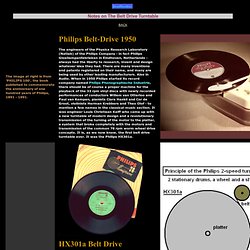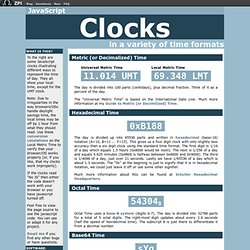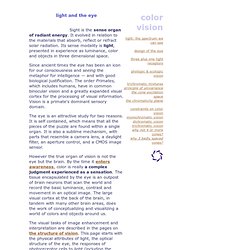

10 Enormous Numbers. Technology One of the first questions that kids often ask is “What is the biggest number?”

This question is an important step in transitioning to a world of abstract concepts. The answer is of course that numbers are generally considered endless, but there gets to be a point were numbers become so big that there really is no point in having them, they have no real importance outside of the fact that yes technically they do exist.
To make a list like this I could simply write down a massive number for the first number, and then write +1, +2, +3 and so on for the rest of the list. Instead I chose to take out 10 numbers that do have some effect on the world and place them in ascending order, giving a brief explanation as to what they are and how they have some relevance on the world, albeit very small relevance, especially when compared to the size of the number itself. 1242a - VISTA gigapixel mosaic of the central parts of the Milky Way. This striking view of the central parts of the Milky Way was obtained with the VISTA survey telescope at ESO’s Paranal Observatory in Chile.
This huge picture is 108 200 by 81 500 pixels and contains nearly nine billion pixels. It was created by combining thousands of individual images from VISTA, taken through three different infrared filters, into a single monumental mosaic. Babbage Difference Engine in Gigapixel. BELT DRIVE TURNTABLE Philips Thorens Verdier Melco Micro Mercure NOTES DIY. Mr.

Yamamura and the Melco Turntables A few years earlier, in 1981, I stumbled upon the Melco turntables which were for the first time on display in Paris. I had an interesting conversation with Mr. Yamamura. Clocks. Metric (or Decimalized) Time The day is divided into 100 parts (centidays), plus decimal fraction.

Think of it as a percent of the day. The "Universal Metric Time" is based on the International Date Line. Much more information at my Guide to Metric (or Decimilized) Time. Hexadecimal Time. Color Wheels are wrong? How color vision actually works. Color theory is a little obsession of mine.

You’re here for startup advice, but this week I’m taking an indulgence. Leave a comment if you want to see more or fewer of these little distractions. Why are artists special? Ask any artist to explain how color works, and they’ll launch into a treatise about how the Three Primary Colors: red, blue, and yellow form a color “wheel:” Critical thinking web. Geometry of the Universe. Can the Universe be finite in size?

If so, what is ``outside'' the Universe? The answer to both these questions involves a discussion of the intrinsic geometry of the Universe. Introduction to Astrophysics. Light & The Eye. • scotopic or dim light adapted rods (denoted by V' and containing the photopigment rhodopsin), most sensitive to "green" wavelengths at around 505 nm • short wavelength or S cones, containing cyanolabe and most sensitive to "blue violet" wavelengths at around 445 nm. • medium wavelength or M cones, containing chlorolabe and most sensitive to "green" wavelengths at around 540 nm • long wavelength or L cones, containing the photopigment erythrolabe and most sensitive to "greenish yellow" wavelengths at around 565 nm As the figure shows, there is a large number of differences between rhodopsin (taken as baseline) and the S photopigment, and a similarly large number of differences between the S and M photopigments.

In contrast, the M and L photopigments are nearly identical. Mapping & Cartography. Murphy Laws. Nuclear Power Plant Demonstration. By Henrik Eriksson The control-room operators of the Kärnobyl nuclear power plant are telecommuting and are running the plant through the Web.

However, the mean time between failure for the components of Kärnobyl is not great. Periodic Table Of Videos. Physics Downloads. Download Physics Notebooks UC Physics Lecture Demo PDF files: Click on the links below to download the files.

The following PDF file is the entire Physics Lecture Demo Catalog: UC Physics Lecture Demos Index UC Physics Lecture Demo Catalog (30 MB PDF file) Return to the Haikyo- Asama Volcano Museum. This was my second time to go to the Asama Volcano Museum.

The first was on my first haikyo road trip back in 2007- back when I was packing only a cameraphone to shoot with and cared far more about the explore than I did about the photography. It was an amazing place to ‘discover’ for ourselves, our nerves on high wires the whole time as the ethereal music rang out from the rooftop. In the two intervening years the balance of my interests has changed, with photography coming to the fore, perhaps naturally, over exploring. The Asama Museum has been shot pretty extensively though, and it’s becoming a challenge to see it in a new light.
From the fore, in HDR. Scale of Universe - Interactive Scale of the Universe Tool. Science and Tech Ads. Search for element 113 concluded at last. ScienceDaily (Sep. 26, 2012) — The most unambiguous data to date on the elusive 113th atomic element has been obtained by researchers at the RIKEN Nishina Center for Accelerator-based Science (RNC). A chain of six consecutive alpha decays, produced in experiments at the RIKEN Radioisotope Beam Factory (RIBF), conclusively identifies the element through connections to well-known daughter nuclides.
The search for superheavy elements is a difficult and painstaking process. Such elements do not occur in nature and must be produced through experiments involving nuclear reactors or particle accelerators, via processes of nuclear fusion or neutron absorption. Since the first such element was discovered in 1940, the United States, Russia and Germany have competed to synthesize more of them. With their latest findings, associate chief scientist Kosuke Morita and his team at the RNC are set follow in these footsteps and make Japan the first country in Asia to name an atomic element.
Stunning images of snowflakes under a (frozen) microscope [20 pictures] Researchers at Beltsville Agricultural Research Center have gathered samples of snow from around the country and are studying them under a microscope. To keep the flakes in their original shape, they’re viewed on a surface that has been chilled to -170 Celsius, or -224 Fahrenheit. (The microscope they use is understatedly labeled “low-temperature.”) Here are some of the amazing images coming from their research… On an interesting side note, man-made snow doesn’t vary in shape like natural snow does, and, in fact, doesn’t even look like natural snow at all when magnified.
It’s just little blobs… The (Zoomable) Milky Way. The Logic Lab: simulating simple circuits of logic gates. The Wall of Time. This 78-page book on physics is selling more copies than 'Fifty Shades of Grey' Apparently, Italians find physics more sexy than S&M – at least for reading material. Since it was published last September, Carlo Rovelli's book Seven Brief Lessons on Physics has sold more copies in Rovelli's native country, Italy, than E.L. James' smash hit Fifty Shades of Grey, The Spectator reported. And the translated English copy has quickly risen to become Penguin's fastest-selling science debut in the publishing company's history. Watch the synchronisation of 32 metronomes (with an explanation behind it) - The Feed Blog. (CBS News) A little over a year ago I posted a video on The Feed that showed a physics principle on display in the form of five metronomes that synched to each other with time and the right conditions.
And it was very cool to watch we all learned something from it. So how about a quick refresher course, this time with 32 metronomes. We Choose the Moon: Pre-launch. WebGL Globe. WorldWide Telescope.